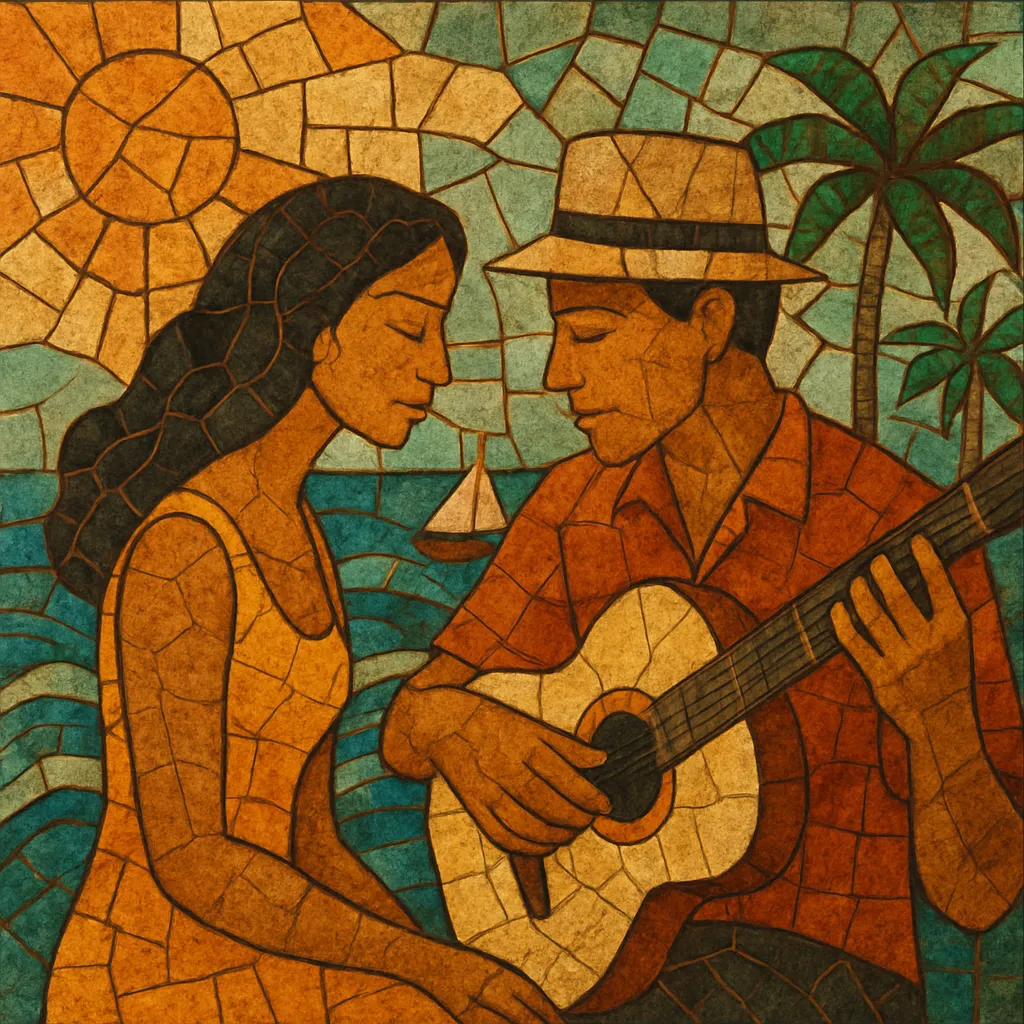Bossa nova is a Brazilian popular music style that emerged in Rio de Janeiro in the late 1950s, blending samba’s syncopated pulse with the harmonic sophistication and understated cool of jazz.
It is characterized by intimate, almost whispered vocals; a nylon‑string guitar playing the distinctive batida (a gently syncopated, two-beat accompaniment); subtle, brushed percussion; and lush, extended jazz harmonies. The mood is relaxed, refined, and full of saudade—a bittersweet sense of longing—often evoking images of Rio’s beaches, nightclubs, and urban modernity.
Bossa nova took shape among young, middle-class musicians in Rio de Janeiro’s South Zone, especially in apartment gatherings and small clubs like Beco das Garrafas. Guitarist and singer João Gilberto crystallized the style with his quiet, precise vocal delivery and the innovative batida guitar rhythm. Composer Antônio Carlos Jobim and poet-lyricist Vinícius de Moraes supplied a new repertoire—urban, modern, and harmonically rich—drawing on samba’s cadence and cool jazz’s voicings. The 1958 single and 1959 LP “Chega de Saudade” are widely cited as the genre’s watershed moment.
In 1962, the Bossa Nova at Carnegie Hall concert introduced the style to a broader U.S. audience. The landmark 1964 album “Getz/Gilberto,” featuring João and Astrud Gilberto with Stan Getz, made “The Girl from Ipanema” a global hit and won multiple Grammys, cementing bossa nova within the jazz world. American jazz musicians adopted bossa rhythms and repertoire, while Brazilian artists toured and recorded abroad.
Following Brazil’s 1964 military coup, several bossa figures spent time overseas, and the style intertwined with the burgeoning MPB (Música Popular Brasileira) movement. Artists such as Nara Leão, Carlos Lyra, Roberto Menescal, Marcos Valle, and Baden Powell expanded the palette—Baden Powell and Vinícius’s “Os Afro-Sambas” (1966) fused Afro-Brazilian elements with bossa harmony. Bossa’s lyricism and harmony also fed into Tropicália’s avant-pop experiments.
Bossa nova’s language permeated lounge, easy listening, smooth jazz, and international pop. Sérgio Mendes & Brasil ’66 popularized polished, cosmopolitan variants worldwide. From the 1990s onward, new generations sampled and reinterpreted bossa in acid jazz, nu jazz, and lo‑fi hip hop, while the classic repertoire became a standard part of jazz songbooks. The passing of key figures (including João and Astrud Gilberto) prompted renewed appreciation, and the genre continues to symbolize a timeless, elegant modernism in Brazilian music.


